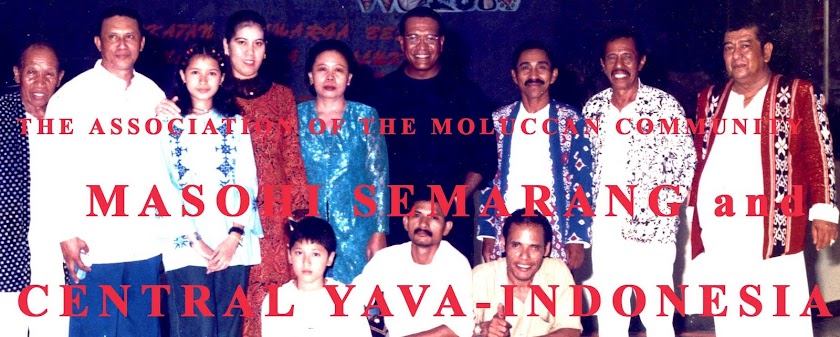
ISLAND TAGALAYA, white sand and mangrove forests that grow around a unique of this island. Tagalaya around the waters of the sea there is a garden that has a sea biota diverse and still very beautiful. This place is ideal for those of you who like the bottom of the sea diving.

BEACH DORUME, well have a great sea waves. For your surfing pleasure, came to this beach on the days around December. At the time of the waves on the beach Dorume can reach a certain altitude. Charm that can be enjoyed pasirnya is a very smooth and looks sparkler by the sun. This is because the beach sand Dorume contain iron seed.

BLUE TALAGA , The people around call, terletaknya in the village Mamuya district Galela. Having water that is clean and colorful kebiruan so called Talaga Biru. According to legend, the era of the first woman from Khayangan often bathe in this talaga. The uniqueness of this place is any foliage that falls in the middle talaga always float to the edge so that water talaga always appear clear and clean.

ISLAND DODOLA, paving Surrounded by white sand beaches that are very knowledgeable of the island Dodola Large and Small Dodola. Panorama surrounding natural and crystal clear water is perfect for swimming and diving. There are also other islands around which you can explore. Dodola beach is 5 miles from Daruba, capital of the District of South Morotai.

BEACH KUPAKUPA, The uniqueness of this beach is located as if that is in the bay so that water has a very calm sea. Is ideal for water skiing, boating, swimming and MANCING. Beringin trees that grow along the coast is also the scene for enjoyment. Sunday in the day this place is usually visited by many tourists.

KUMO BEACH, located on the island of Kumo. The beach is the closest distance from Tobelo. Marine water that is clean is suitable for boating, surfing and swimming. From this place you can enjoy face Tobelo city that is located exactly in front of it. Not far from this place there are small islands such as island Rorangane, dislocated islands and island Bawole which also offers the unique charm of nature.

BEACH LUARI, with white sand beach and natural scenery of this charming village located in North Luari districts Tobelo. Location directly facing the Pacific ocean is the attractiveness of segregated beaches Luari. This place is often used for the tourist and recreational swimming. Easy to reach places with land transportation, 15 minutes from Tobelo.

ISLAND marrow, with the value of historical high is located only 3 miles in front of the city Daruba. Zumzum are small islands with a natural panorama of white sand beach pebble. General Douglas Mc Arthur, associate troop leader for the Asia-Pacific region during the world war II had lived on the island. Goa central command and the landing amphibi still visible on the island.
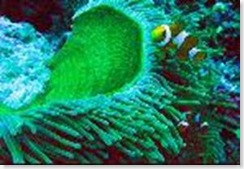
TAMAN LAUT TOBOTOBO, located in the village Tobotobo district Loloda Islands. This place has a marine park which is very beautiful, so are strongly advised to Snorkling or diving activities. Tobotobo also found in thousands of bats that live in the dependent mangrove trees and bath dove white and blue. This place can be reached with the sea transportation.
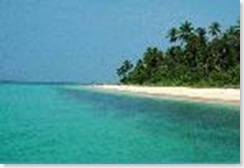
BOBALE BEACH, located on the island of Kao Bobale district. In the waters around this place there is a marine park that is still very natural, so very often used the tourists for diving activities. On the island there is also a bunker is still intact, which is a Japanese monument on the second world war. Bobale can reach the island with a speedboat from the village of Daru with mileage of only 20 minutes.
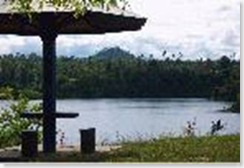
TALAGA-GALELA Duma, Duma-Galela Lake is the largest lake in North Halmahera, located in the district Galela and can be reached through the land for 45 minutes from Tobelo. This lake offers a beautiful panorama of nature and natural. Water clear and calm, so suitable for swimming, rowing and MANCING. Not far from this place, there is also talaga Makete, talaga Likonano and talaga Kapupu.
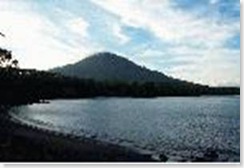
MATA AIR PANAS MAMUYA, located in the village Mamuya district Galela which is a spring that comes from the belly of the mountain Mamuya. Hot water is used for both berendam. For the local community hot nutritious mamuya trusted to heal various skin diseases. This place is only 15 km from the town of Tobelo.
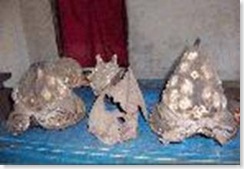
KAPASETI, Hat War by the local residents called Kapasti. It is the Sultan of Ternate to the King Momole. In addition there is also the Hat war ordnance, among other long parang (sword), a vial containing the oil and root wood tied red cloth and leather bia (shells) that are usually in use during the war. This object can be found in the village Soakonora district Galela West.
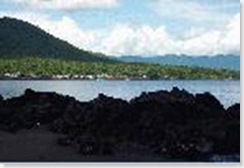
TELUK SOMOLA, small islands of mangrove ditumbuhi above the rocks and sea water is crystal clear kebiruan the scenery can be found in this place. In this place you can go by boat through bay while enjoying the beauty Somola. At the time a particular variety of fish in the sea will enter the amount, and many were trapped in the waters of this bay. This beautiful place can be reached from the beach with boating Galela Pune district.
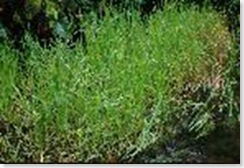
PADI WANGONGIRA, One of the uniqueness that can be found in the village of West Wangongira Tobelo is the rice plant that grows in the swift river current. River where rice is grown is given a name that means the river Molulu slip. According to legend, when a grandmother back from the fields with the rice, the grandmother slipped away and brought the river flow. Paddy brought before a grandmother and then grow to this day.

STONE COFFEE, There on the beach Posiposi-Rao, Morotai South West District. A unique name derived from the story of local people who often drink coffee aroma smell coming from this stone. Usually coffee aroma is tercium the afternoon. In the same location, we also can swim, surf, diving and boating. If you want to surf, November and December is the ideal time to visit this place.
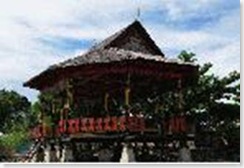
HIBUALAMO KAKARA, Kakara Island as a trusted home-first culture Hibualamo. For you it mampirlah tour history to this island to see the construction in the first custom house Hibualamo. Hibualamo home means a great round shape. Kakara island can be reached only with a speedboat about 15 minutes from the port of Tobelo.
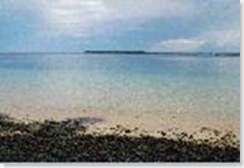
ISLAND RORANGANE, Rorangane Island is a cluster of small islands located in front of the city Tobelo. This island has a sea water is very clear and clean so that it is appropriate for those of you who idolize sports pool. Rorangane island can be reached only with a speedboat about 15 minutes from the port of Tobelo.
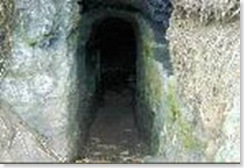
JAPANESE hiding hole of the World War II, One of the history of tourism can be found in the village district Galela West Samuda is hiding hole of the Japanese during world war II. A hole hiding underground tunnels along the ± 20 meter has several rooms that are estimated to meeting rooms. Because the exact location of which is under the road so visitors can feel the vibration when the sound of vehicles that are on top of travel.
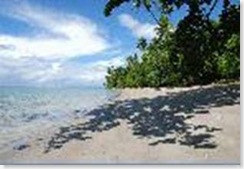
BEACH GAMLAHA, It is one of the coast of North Halmahera in with the natural environment that is still very beautiful. Gamlaha beach with fine white sand and a calm sea currents is one of the locations listed in the tourist village Gamlaha. From this beach you can enjoy the island Bobale which is located in front of it while you relax rimbunnya among coconut trees that grow along the coastal beaches. Do not miss to visit this beach when you are in North Halmahera.
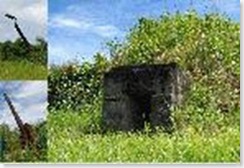
Bunker and cannon Kao, Kao History of Halmahera in the North can not be released from Japanese occupation during World War II. In this city many found objects such as a war monument at the location of the airport there are Kuabang Kao. In this location there are some bunker and four cannon in good condition. Bunker 2 had the largest room with a long tunnel ± 15 meters in the area near the runway. Platform Kuabang own Japanese heritage is the foundation.
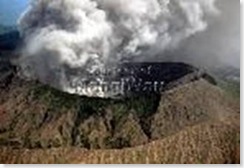
GUNUNG API DUKONO, Dukono is one of the tourist attraction volcano in North Halmahera. Dukono mountain with a height of 1185 meter dpl ± is one of the most active volcano in Indonesia. Climbing to the top can be done through the village or Mamuya House (distance ± 13 Km) passing through the plantation of coconut, nutmeg, clove, chocolate and banana owned population. Make sure you know the latest status before Dukono mountain climbing.
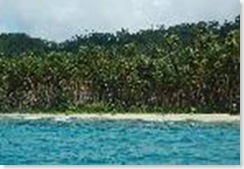
PANTAI POSIPOSI
Read More...Baca selanjutnya...
